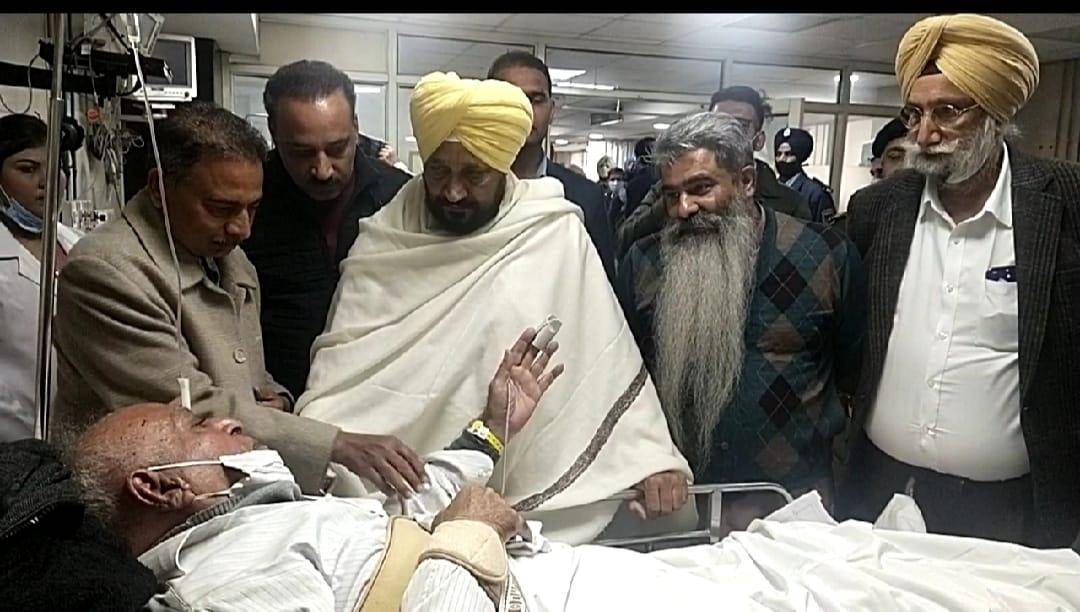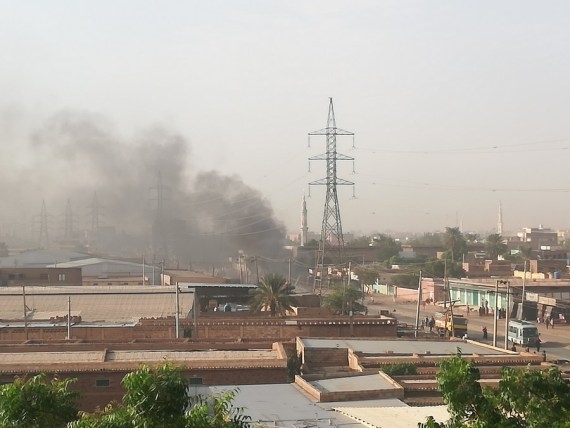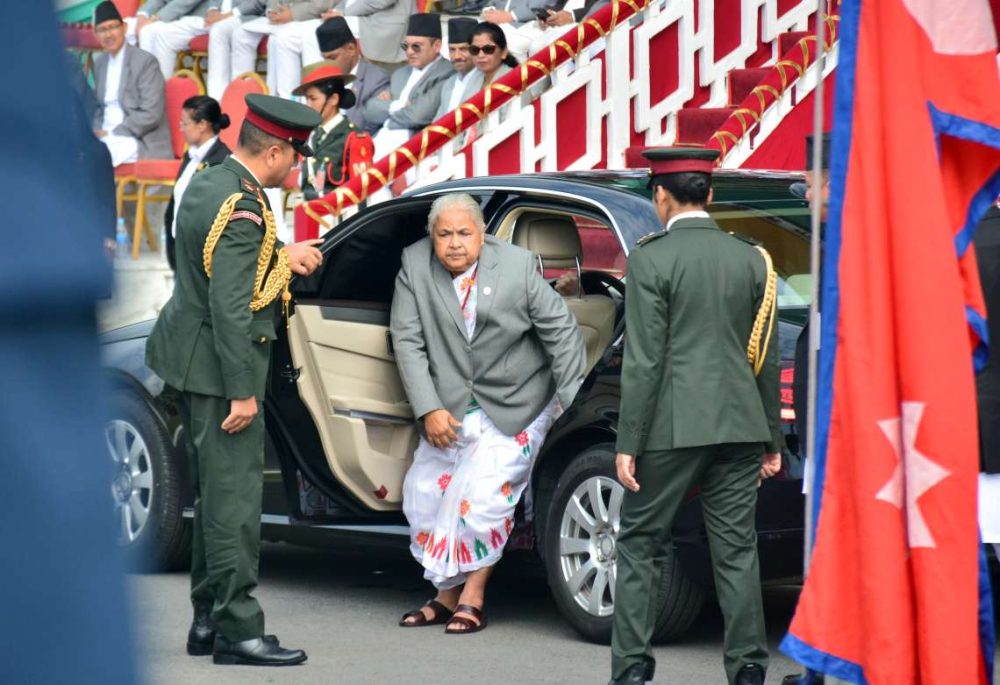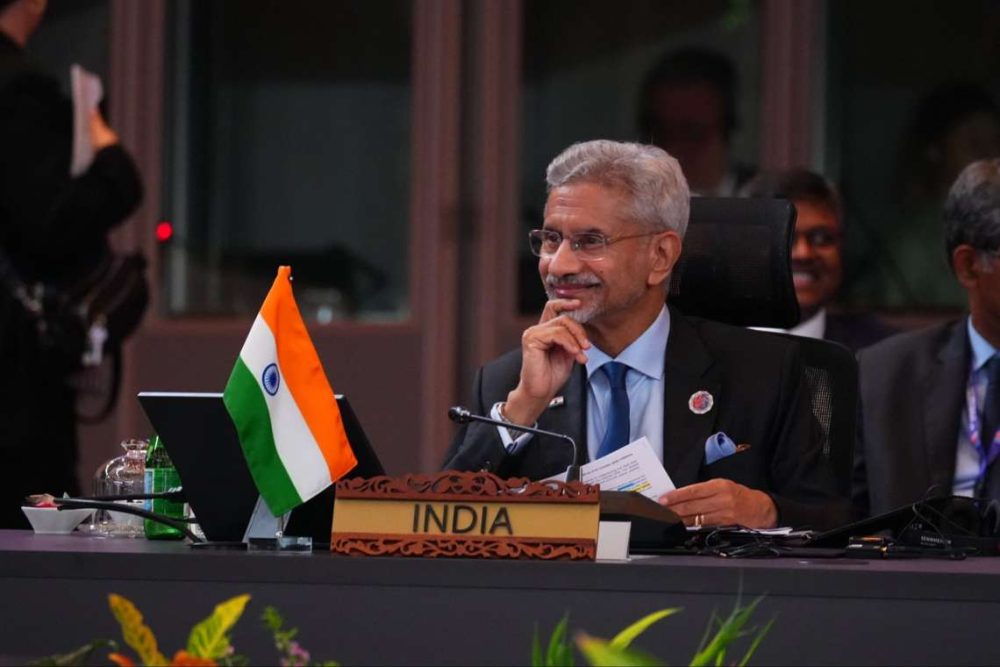Punjab Police on Saturday claimed to have cracked the Ludhiana court bomb blast case after identifying the accused-cum-victim, Gagandeep Singh (31), who reportedly had links with pro-Khalistan elements in Pakistan and Germany … reports Asian Lite News
Punjab Police on Saturday claimed to have cracked the Ludhiana court bomb blast case after identifying the accused-cum-victim, Gagandeep Singh (31), who reportedly had links with pro-Khalistan elements.
A high-intensity explosion occurred in a public toilet at the district court complex in Ludhiana on Thursday, which left one person dead and six others injured. As per the police, Singh was the person who died while planting the bomb.

The accused was recruited by the police as a constable before being dismissed in August 2019 after heroin was recovered from his possession.
“I am proud of Punjab Police, which has successfully cracked the Ludhiana blast case in less than 24 hours,” Punjab DGP Siddharth Chattopadhyaya told the media on Saturday.
The district court was functioning as usual when the blast took place and its impact was so powerful that the public toilet was completely damaged and several window panes of the building were shattered.
Chattopadhyaya said that after the post-mortem, the police were able to identify the deceased from a tattoo on his right arm. Separately, DNA samples of the body were also collected, he added.
He said the accused was working in Khanna town when he was arrested with heroin and an NDPS case was registered against him. The case is still under trial at the prosecution evidence stage, said the DGP.
He said after spending two years in a Ludhiana jail in connection with the case, Singh got out on bail in September and was supposed to appear in the court again on December 24.
The DGP said that preliminary investigations suggest that the accused wanted to create fear and panic in the court premises.
Another report says the blast has links with Germany based pro-Khalistan terrorist Jaswinder Singh Multani.
A native of village Mansoorpur in Hoshiarpur district of Punjab, Multani has been supplying weapons and explosives in India by using his network of Pakistan based smugglers to carry out terror strikes on the Indian mainland. Intelligence inputs indicate that the Pakistani ISI specifically tasked Multani along with Pakistan based ‘Category A’ wanted gangster cum Khalistani radical, Harvinder Singh aka Rinda Sandhu, to carry out terror attacks to destabilise Punjab in the run-up to the assembly elections.
Not ruling out the Pakistan-based pro-Khalistan connection behind the act, the Punjab DGP said the police are investigating the case from all angles.
“Preliminary investigations suggest that the accused could have developed links with pro-Khalistan elements in the jail, who used him to target the court premises with the intention of disturbing the peace in the state,” said Chattopadhyaya.
He said the materials used for the explosion are yet to be ascertained, and samples have been sent to the forensic lab.
“A team of the National Security Guard (NSG) and that of the state forensic experts were called for a post-blast investigation,” he said.
During the course of systematic clearing of debris at the blast site, the forensic team collected some vital clues like damaged mobile set and burnt clothes on the body of the victim, besides other material evidence, the DGP added.
According to the accused’s wife, Jaspreet Kaur, her husband had left home at about 9.30 a.m. on the day of the blast. She recognised the tattoo mark on the arm of Singh and the clothes worn by him.
Another report meanwhile says Khalistani groups carried out the Twitter campaign with ISI help before the blast.
Reports say the ‘Twitter warfare’ began from Pakistan on December 16, which is celebrated as the ‘Victory Day’ in Bangladesh to commemorate the victory over Pakistan in the 1971 war.

The responsibility for the campaign was handed over to a group named Mohabbat Mafia, which became active on December 15, using an account named Shafqat Ch and tweeted the hashtag DhakatoKhalistan. It said “Time is turning around. Dhaka 1971 is going to repeat itself on another side. To Khalistan and lot other separate states.”
According to intelligence officials, it was a call to the Pakistani groups, Khalistan sympathisers and other inimical outfits keen to attack India, to work towards creating Khalistan, carved out of Indian Punjab, The Week reported.
Intelligence agencies are also citing a letter written by Gurpatwant Singh Pannun, the face of Sikhs For Justice (SFJ), to Pakistan Prime Minister Imran Khan on December 16 asking for support towards the cause of ‘fall of Delhi’, just like the ‘fall of Dhaka’ in 1971. In the letter, he mentioned the need to take action.
According to a senior intelligence official, the synchronised campaign reflects Pakistan’s new fifth-generation warfare technique to foster separatism and extremism using social media tools.
The official said the idea was to avenge the drubbing received by then West Pakistan at the hands of India during the 1971 Bangladesh Liberation War using modern tools like cyber propaganda and misinformation campaigns.
“The idea was simple, use as many images to provoke Indians, put out maps of Khalistan, fake images to create a sense of support for the cause and use the opportunity to gain as many followers for the group involved in trending the hashtag,” he said.
The hashtag garnered 9,566 tweets and a whopping 60,679 retweets by a total of 3,736 handles until December 17.
Intelligence agencies have used various technological tools to analyse the profiles of the accounts running the campaign, digging out the deleted tweets and seeing how the campaign shifted to trending #Pakistanfirst. Incidentally, all these accounts were supporters of the ruling Pakistan Tehreek e Insaaf, said an intelligence official.

Security officials said the Twitter campaign #DhakatoKhalistan was a deliberate ploy not only to change the narrative of the defeat during the 1971 war, but also a well-orchestrated move by Pakistan-based groups to garner international support for radical separatist groups in India.
According to top security officials in the know of the developments, Jaswinder Singh Multani, a Germany based pro-Khalistan terrorist, has played a crucial role in the sessions court blast on December 23. A native of village Mansoorpur in Hoshiarpur district of Punjab, Multani has been supplying weapons and explosives in India by using his network of Pakistan based smugglers to carry out terror strikes on the Indian mainland. Intelligence inputs indicate that the Pakistani ISI specifically tasked Multani along with Pakistan based ‘Category A’ wanted gangster cum Khalistani radical, Harvinder Singh aka Rinda Sandhu, to carry out terror attacks to destabilise Punjab in the run-up to the assembly elections.
According to available inputs, Multani has been closely associated with the banned outfit Sikhs For Justice (SFJ) for promoting separatist activities and is said to be in constant touch with US based SFJ president Avtar Singh Pannu and Harmeet Singh @ Harpreet @ Rana, who are pursuing separatist agenda of Khalistan through Sikh Referendum 2020. Multani is understood to be assisting the SFJ’s separatist campaign in Germany and recently come to notice of the law enforcement agencies for arranging consignments of weapons, explosives, hand grenades and ammunition from Pakistan, with the help of his Pakistan-based operatives cum arm smugglers.
Multani is said to be planning to carry out terrorist activities in Punjab and other parts of India using explosives smuggled from across the border. It is learnt that Multani even targeted a key farmer leader Balbir Singh Rajewal, president of BKU-Rajewal, for the latter’s speech condemning the Khalistani forces’ attempt to infiltrate and derail the protest over farm laws. In August 2021, the Punjab police arrested Saroop Singh of Tarn Taran district, who was radicalised by Multani and had sent two high explosive hand grenades to him for creating mayhem in the district town. The involvement of Pakistan based Harvinder Sandhu aka Rinda was revealed during the June 2021 interrogation of a so-called Khalistan supporter Jagjit Singh, who was caught with 48 pistols, 99 magazines and 200 cartridges in the Khemkaran-Ajnala sector by Punjab Police.
A hardcore criminal, Rinda, who originally hailed from Taran Taran, shifted to Nanded Sahib in Maharashtra and then moved to Pakistan. He was sentenced to life imprisonment in September 2011 for the murder of a youth in Tarn Taran in 2008. In January 2014, he had attacked the officials of Patiala Central Jail. On April 8, 2016, he had fired eight bullets at the Students Organisation of India (SOI) president at the Student Centre in Punjab University, Chandigarh. He is also accused of killing Hoshiarpur sarpanch Satnam Singh outside a gurdwara in Sector 38 (west) Chandigarh in April 2017. It was a case of contract killing hired by a Hoshiarpur-based transporter to murder the sarpanch.
READ MORE: Pak-sponsored Khalistani outfits gaining ground in US, reveals report
READ MORE: NIA team in Canada to get Khalistani outfits terror tag









